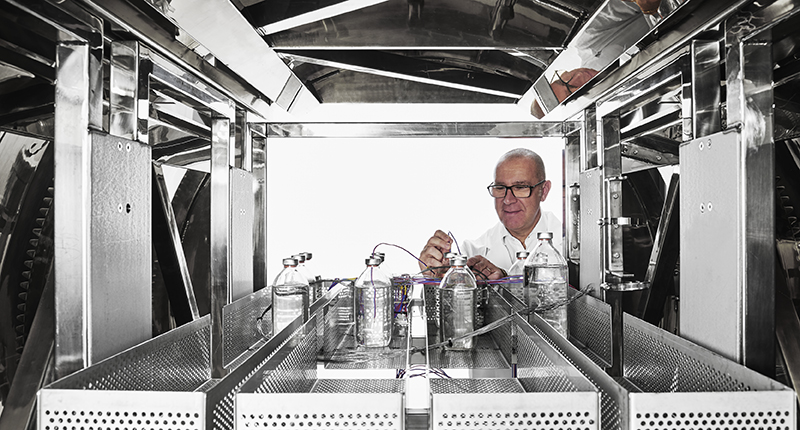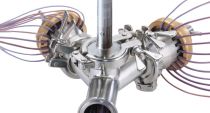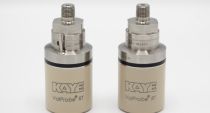In this blog post, we would like to delve a bit deeper into the importance of steam quality in moist heat sterilization. As usual in our blog posts, we do not lay claim to a highly scientific presentation, but rather focus on imparting basic knowledge. For further in-depth understanding, there's plenty of specialized literature available to interested readers.
Why is steam quality important when it comes to sterilizing medical instruments or pharmaceutical products? Quite simply - without the necessary steam quality, there is the risk of an improperly executed sterilization.
But why is that? Simplified again - insufficient steam penetration and the presence of so-called non-condensable gases can negatively affect the sterilization result.
What is steam quality?
In sterilization, steam quality refers to the specific properties of steam necessary for successful sterilization. It defines the mass ratio of steam to water in a steam-water mixture.
The following steam properties are important for sterilization:
1. High energy content for optimal heat transfer and achieving sterilization temperatures.
2. Enhanced penetration ability, ensuring complete coverage of items to be sterilized.
3. Ability to condense and displace air from the chamber, allowing for efficient sterilization.
Inferior steam quality can hinder sterilization as it can impede both heat transfer and steam penetration. Therefore, monitoring and controlling steam quality in moist heat sterilization is crucial.
What are the causes of insufficient steam quality?
Inefficient steam quality can have different possible causes:
1. Lack of isobaric conditions: For optimal steam quality, the steam should be in an isobaric state balanced with the surrounding water and the pressure should remain stable. Deviations from this state can lead to thermal imbalances in the steam, thereby reducing the efficiency of sterilization.
2. Overheating: When the temperature is too high and exceeds the boiling point at a certain pressure, superheated steam is produced. This condition hinders contact with the surfaces to be sterilized and can reduce effective heat transfer.
3. Anomalies in steam distribution: An uneven distribution of steam across the sterilization chamber could result in some areas of the items to be sterilized coming into insufficient contact with steam.
4. Insufficient steam generation and delivery: Faulty maintenance of steam generation and delivery systems or anomalies in these processes can affect the quality of the steam produced.
5. Water quality: The quality of the water used to generate steam directly impacts the steam quality. Water-related impurities or chemical components can negatively affect the steam generation process as well as the properties of the steam produced.
To ensure the optimal steam quality for the sterilization process, it is therefore crucial to monitor, regulate, and control the above-mentioned factors. Each of these aspects plays a key role in achieving a consistent and efficient steam quality, which is an essential prerequisite for successful sterilization.
What methods are available to verify steam quality?
Several methods exist in sterilization technology to check steam quality:
1. Steam quality test: Here, the enthalpy of the steam is measured and compared with theoretical values to determine whether the steam is saturated.
2. Bowie-Dick test: A daily test for pre-vacuum sterilizers that ensures that air or other non-condensable gases have been effectively removed and allow full steam penetration.
3. Chemical indicators: These change color or shape when exposed to steam, thereby testing steam penetration.
4. Biological indicators: The beneficial use of heat-resistant bacterial spores allows an accurate statement about the effectiveness of the sterilization process.
5. Physical measurement: The measurement of temperature and pressure parameters during sterilization and subsequent application of the gas law as described by Gay-Lussac.
This concept is closely intertwined with the principles of thermodynamics, especially as depicted in the Ideal Gas Law (PV=nRT). In this equation, each symbol represents a critical factor in the process: 'P' stands for pressure, 'V' for volume, 'n' for the number of moles of gas, 'R' is the universal gas constant, and 'T' denotes the temperature.
Again, to put it simply: In a gas mixture, the temperature can be determined by measuring the pressure, and the pressure can be determined by measuring the temperature. Ideal, or saturated, conditions are achieved when the measured and theoretically determined values match.
These methods each provide individual, but often also combined, information for assessing the steam quality and steam penetration in a sterilizer, and are also practically applied.
What practical options are available to a user of a Kaye validation system?
Both the Kaye Validator AVS and the Kaye ValProbe RT system allow for simultaneous measurement of temperature and pressure as part of the validation study.
The simultaneous connection or measurement of temperature and pressure sensors and the automatic evaluation according to the Ideal Gas Law make for a user-friendly experience and allow for real-time control during the validation study. Of course, standard-compliant documentation is part of the overall solution.
Conclusion
The quality of the steam significantly contributes to successful sterilization. Key parameters, pressure and temperature, according to the ideal gas law (PV=nRT), are crucial for this. Only when the steam is in a saturated state, that is, the water-steam equilibrium is guaranteed at stable pressure, can ideal sterilization be achieved.
Overheating of the steam or uneven steam distribution can, for instance, mean that the steam does not reach all areas to be sterilized evenly. Furthermore, inadequate steam production and delivery, as well as poor water quality, can affect the steam quality.
In addition to the basic physical parameters, the application of Bowie-Dick tests to check steam penetration and the use of chemical and biological indicators play an essential role in steam sterilization to ensure effective and safe sterilization.
To enquire about a product or service, you can reach out to us online and one of our representatives will be happy to assist you! To contact us, please visit us here: https://www.kayeinstruments.com/en/contact
To request a demo of any of our products, please visit our demo request website here: https://www.kayeinstruments.com/en/demo
Follow us on LinkedIn or register for our newsletter: https://www.kayeinstruments.com/en/newsletter-subscription
Copyright: Amphenol Corporation





